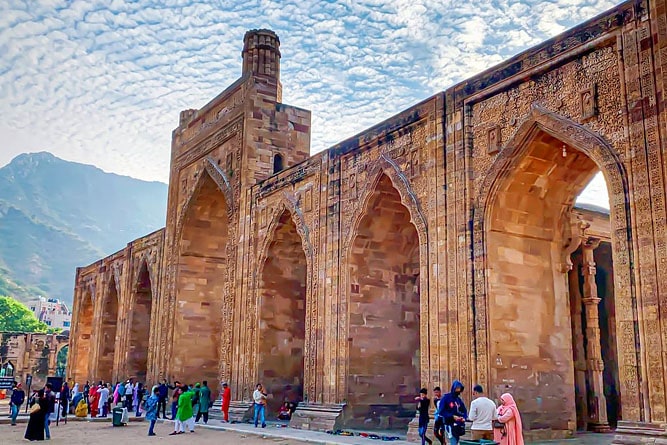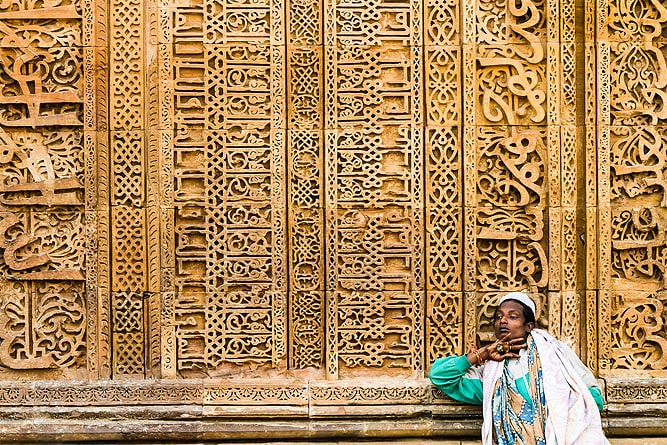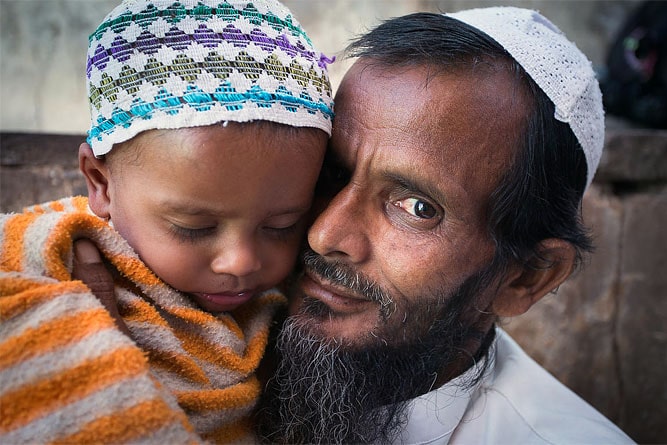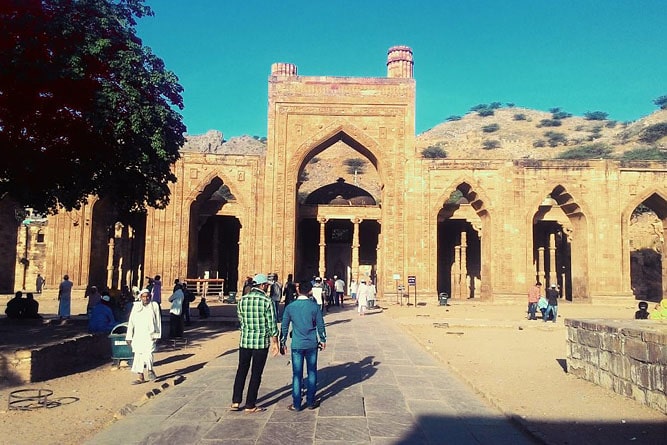Adhai Din Ka Jhonpra Mosque
Mosque in Ajmer
could-see attraction
Opening hours: dawn-dusk
Address: Ander Kote Rd, Lakhan Kothri, Ajmer, Rajasthan
Ticket price: Free
Visit duration: People typically spend up to 1.5 hours here


About Adhai Din Ka Jhonpra Mosque, Ajmer
Adhai Din Ka Jhonpra is a majestic monument which is the oldest surviving mosque in Ajmer. The mosque features the early Indo-Islamic architecture of the Indian subcontinent.
Initially, it was an Indian edifice which was altered into an Islamic structure during the Sultanate dynasty. The complex is the ideal blend of Hindu, Islamic and Jain architecture.
Since Indian Independence, the edifice has been managed by the Archaeological Survey of India.
History of Adhai Din Ka Jhonpra Mosque
Some say that the Adhai Din Ka Jhonpra is a Jain temple celebrating Panch Kalyanaka and that it was built in the 6th century by Seth Viramdeva Kala. However, other inscriptions suggest it used to be a Sanskrit college during the Chauhan dynasty. Muhammad Ghori and his slave general, Qutb-Ud-Din-Aibak seized Ajmer and transformed the structure into a mosque by installing a seven-arched wall on the facade of the pillared hall. The new structures were covered with Islamic calligraphy.
Abu Bakr of Herat designed the edifice where Afghan managers supervised the construction while Hindu masons and labourers formed the embellished structure thus retaining the Indian architectural features. Iltutmish, the next successor of Delhi during Sultanate rule, enriched the mosque by adding the notable seven-arch screen. Adhai Din Ka Jhonpa was used as a mosque till 1947.

Architecture of Adhai Din Ka Jhonpra Mosque
Adhai Din Ka Jhopra includes soaring domes, pillars and arched screens, most pieces taken from Jain and Hindu temples. The layout of the complex is square in shape covering an area of 1036 feet. There are as many as 344 pillars in the entire complex. The pillars in the courtyard are placed symmetrically.
The complex has stairs at both the gateways located on the south and east side of the complex; however, the north side is enclosed by a hill rock.
Beyond the south gateway stands an enormous seven-arch screen at the facade. The screen is built of yellow limestone. The central arch is almost 60 feet tall and is attached to six smaller arches. The arches have panels that illuminate the complex with daylight, a feature of Arabian mosques. The walls have intricately engraved arabesque patterns and Arabic letters like Kufic and Tughra inscriptions and verses from the Quran. The archway features Islamic architecture from Ghazni and Turkistan and Persian tilework.
The interior of the complex is 200 by 175 feet and comprises the main hall that is supported by arcade columns. The pillars are heavily engraved with craftsmanship similar to Hindu and Jain temples. The pillars have wide bases that narrow with height.
The mosque is located on the western side of the complex. It has ten domes and around 124 pillars that enclose the mosque. The sanctuary is 141 feet by 39 feet. The mihrab, the ideal position of the wall always facing the west towards Mecca, is carved with white marble.
The large muazzin's towers are located in two small fluted minarets which are now ruined. The remnants reflect similarity in workmanship to the Qutb Minar of Delhi.
The richness of red sandstone architecture blended with enriched craftsmanship by Indian masons is witnessed here. The combination of Jain figurines, with Islamic arabesque designs and Indian lattice carvings - all blended into a single structure makes it unique among other historical edifices of India.

Entry fee and timings
Adhai Din Ki Jhonpra is open everyday from 6:00 am to 6:00 pm. There is no charge required to enter the complex.
Facts and tips about Adhai Din Ka Jhonpra Mosque
- According to folklores, Muhammad Ghori saw the pre-existing structure while passing through Ajmer. He commanded Qutub-Ud-Din-Aibak to convert the structure into a mosque within 60 hours. However, later the Sufis visited the complex to celebrate the death anniversaries of the saints. So it is either it took only 2 and a half days or festivals lasting for 2 and a half days that led to the name of the complex.
- The original layout of the complex included chattris on each corner of the square-shaped pavilion. Fables suggest that the complex consisted of a temple dedicated to the goddess Saraswati. The complex initially had 700 pillars, most of them are demolished and some are left in ruins.
- Adhai Din Ka Jhonpra is the perfect place for a picnic. You can enjoy a nice time with your family and friends at this complex. The place is more cheerful during celebrations on auspicious days.
How to reach Adhai Din Ka Jhonpra Mosque
Adhai Din Ka Jhonpra Mosque is situated in Ajmer. It can be reached in a few minutes on foot from Ajmer Sharif Dargah.
See location on Google Maps
Other attractions near Adhai Din Ka Jhonpra Mosque
- Ajmer Sharif Dargah - 450m
- Pushkar - 14 km
FAQs about Adhai Din Ka Jhonpra Mosque
1. Is photography allowed in Adhai Din Ka Jhonpra Mosque?
Yes, photography is allowed in the complex.
2. Is it worth visiting Adhai Din Ka Jhonpra?
Yes, the unification of different architectural works makes the visit to Adhai Din Ka Jhonpra worthwhile.
3. Is there any place to eat and shop near the complex?
Yes, there are eateries near the complex and a local market is attached to the complex that is perfect to shop in for souvenirs.

